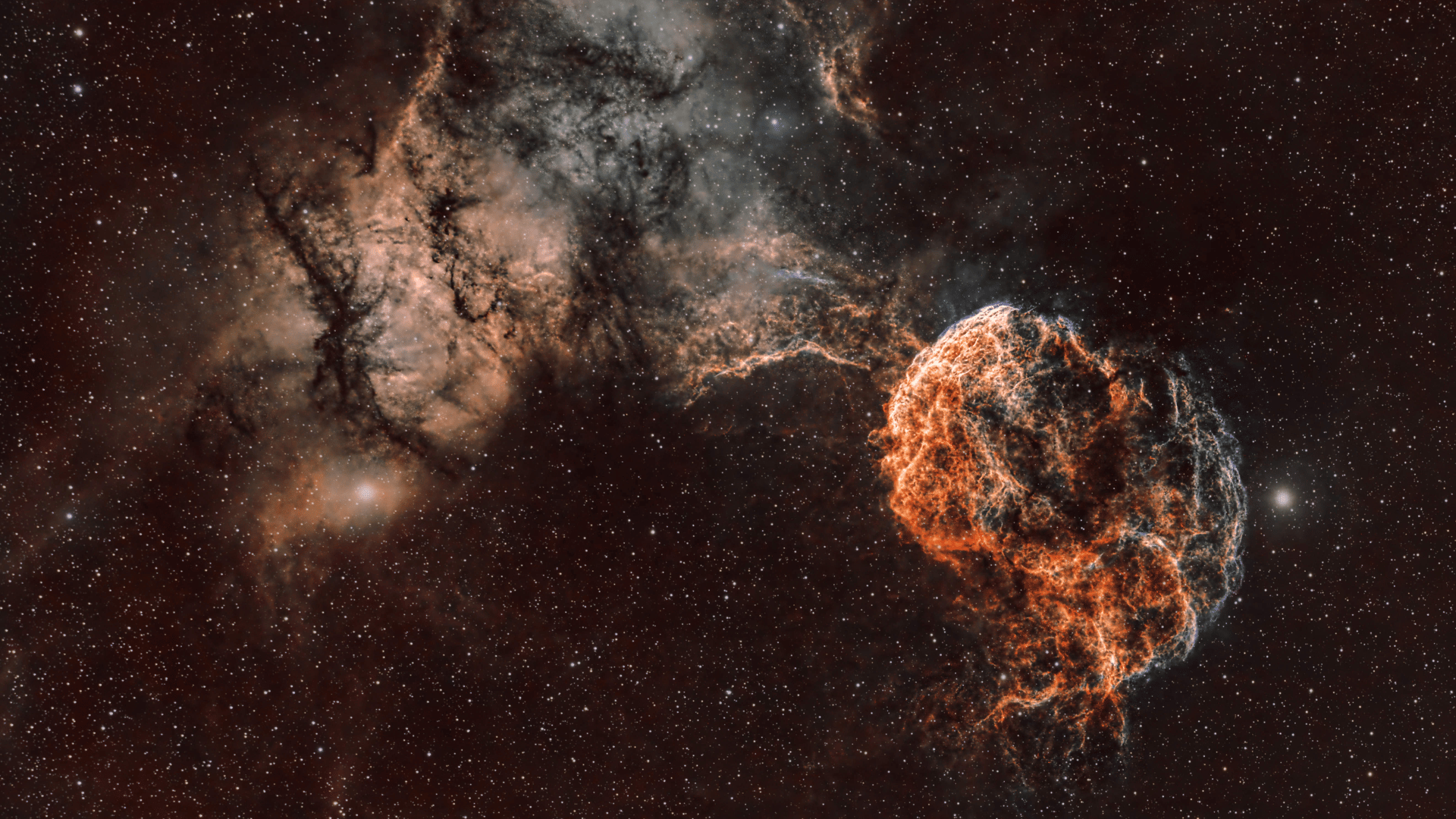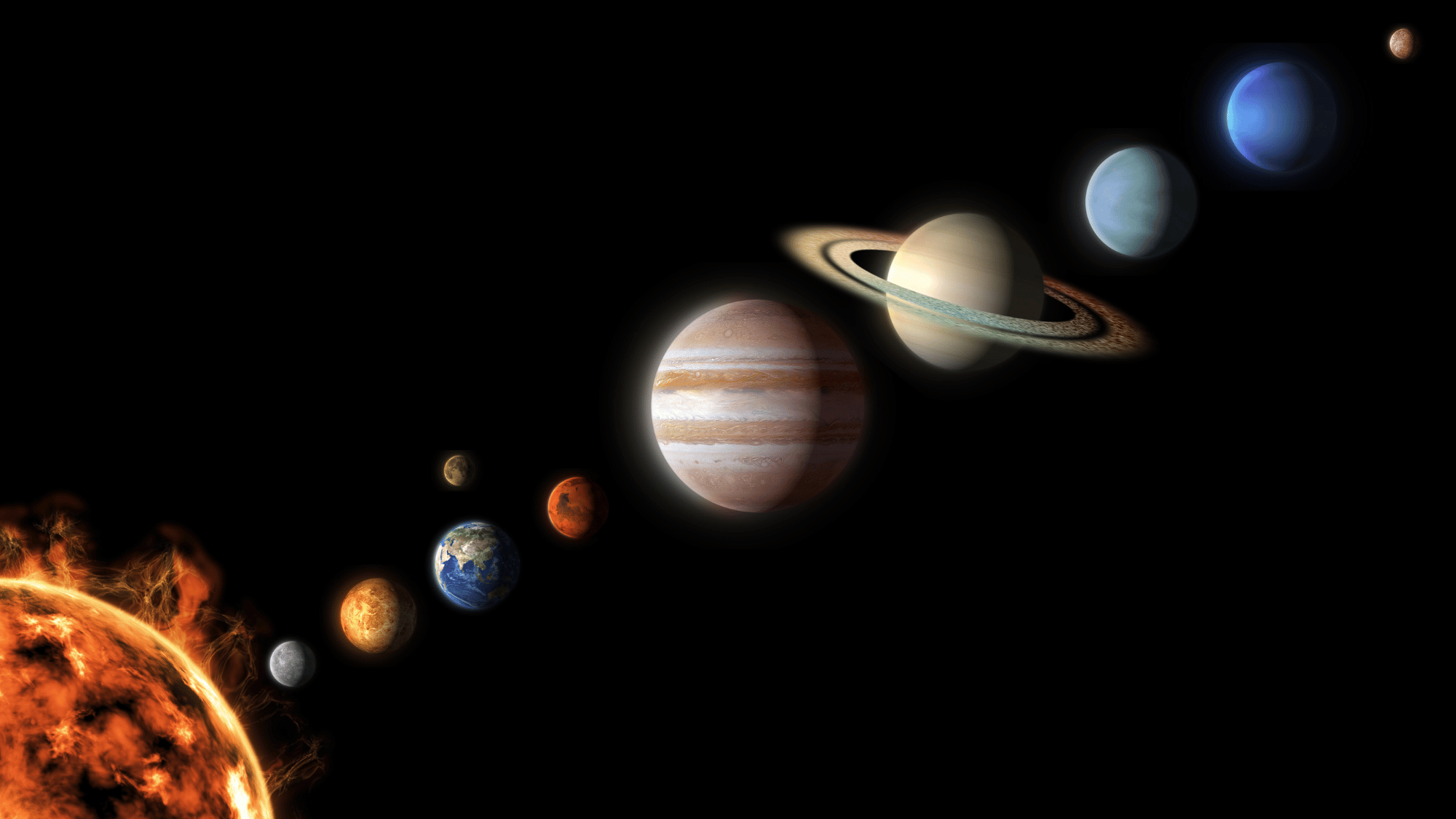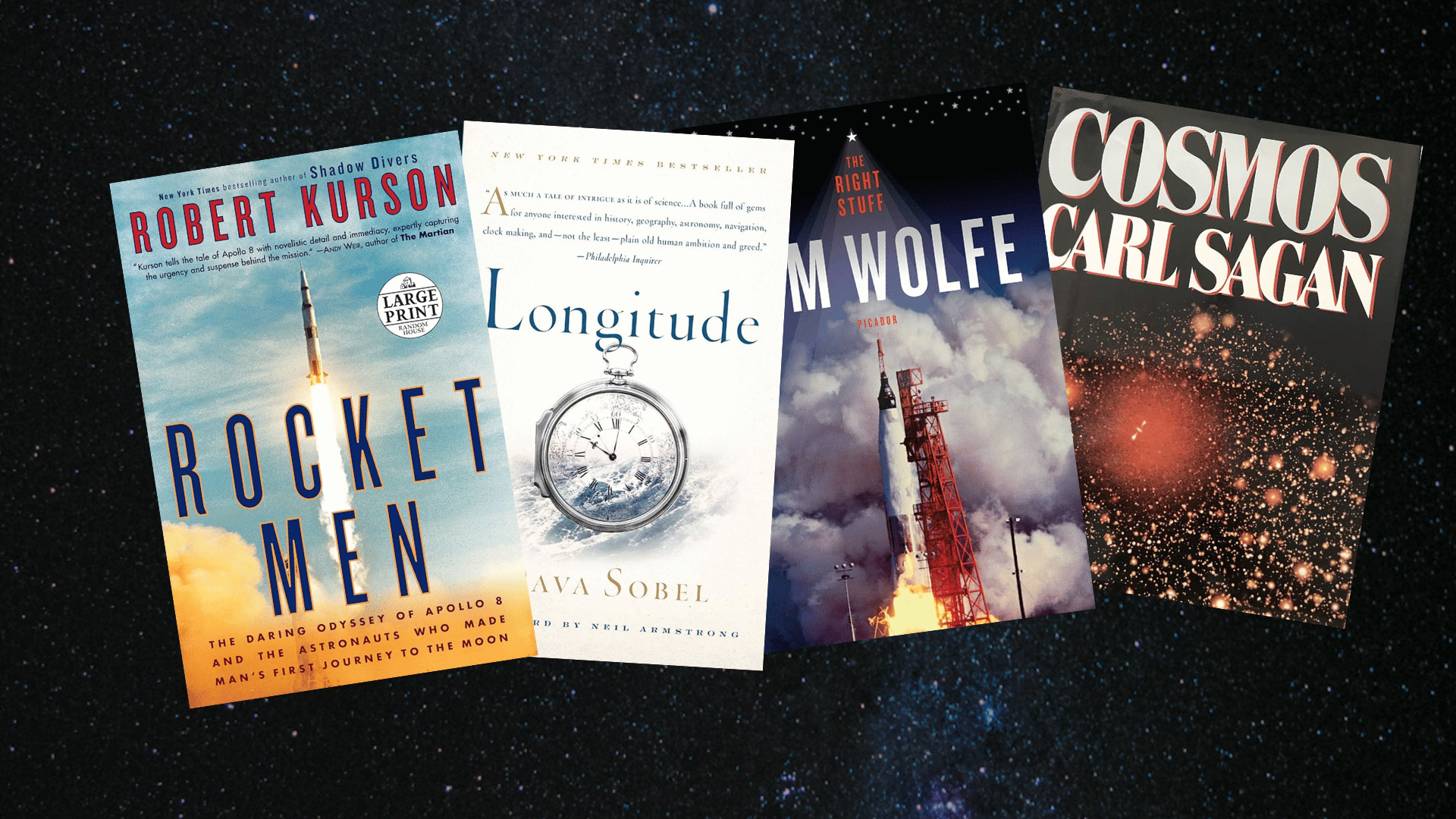Have you ever wondered what happens when a giant star explodes in space? The answer lies in one of the universe’s most stunning creations: the Jellyfish Nebula.
This cosmic wonder gets its name from its flowing, tentacle-like appearance that looks just like a jellyfish swimming through the darkness of space.
Scientists love studying the Jellyfish Nebula because it teaches us how stars die and spread important elements throughout space.
Curious about what other cosmic mysteries await discovery? Let’s learn about the fascinating stellar graveyard and find its secrets!
What is the Jellyfish Nebula?
The Jellyfish Nebula (IC 443) is a supernova remnant located about 5,000 light-years away in the constellation Gemini.
This stunning structure formed thousands of years ago when a massive star exploded, leaving behind glowing clouds of gas and dust shaped by powerful shockwaves.
Spanning roughly 70 light-years across, the nebula gets its name from its tentacle-like filaments that resemble a jellyfish floating through the sea of space.
These luminous strands shine in multiple colors because the expanding supernova debris heats and ionizes nearby gas, causing it to glow in different wavelengths.
When viewed through various telescopes, the Jellyfish Nebula reveals an intricate and colorful structure, with hydrogen glowing red, oxygen shining blue-green, and hot gas seen in X-ray and radio images.
The Origins of the Nebula
The Jellyfish Nebula began its story 3,000 to 30,000 years ago, when a giant star eight to ten times the mass of our Sun reached the end of its life.
Once the star exhausted its nuclear fuel, it collapsed under its own gravity, triggering a massive supernova explosion that blasted stellar material into surrounding space at over 1,000 kilometers per second.
At the explosion’s core now lies a neutron star or pulsar, a dense, fast-spinning remnant containing about 1.4 times the Sun’s mass compressed into a sphere only 20 kilometers wide.
The explosion scattered carbon, oxygen, silicon, and iron into the galaxy, enriching nearby clouds with the essential building blocks of new stars and planets.
This event not only marked the death of a star but also helped recycle cosmic material, continuing the universe’s endless cycle of creation and renewal.
Visual Characteristics of Nebula

Image Source: Sara Wager Astrophotography
Its most distinctive features are the intricate, flowing filaments that extend outward like luminous tentacles, created by shock-heated gas glowing at temperatures exceeding 10,000 Kelvin.
1. Multi-wavelength Appearance
The nebula looks very different depending on which type of light is used to observe it.
In visible light, astronomers see red hydrogen filaments and blue-green oxygen clouds that give the nebula its colorful shape.
X-ray telescopes reveal a blazing core of superheated gas, possibly linked to the central neutron star, while radio observations detect energetic electrons racing through magnetic fields.
In infrared images, scientists can spot warm dust where shockwaves are colliding with molecular clouds, and ultraviolet light highlights the most energetic areas where radiation continues to excite surrounding material.
Together, these views reveal a layered, three-dimensional structure invisible to the human eye.
2. Color and Structure
Each hue in the nebula tells a story. Hydrogen glows bright red, while oxygen creates blue-green highlights throughout the swirling clouds.
The filaments vary in appearance; some are thin and wispy, others are thick and braided, shaped by differences in density and the strength of shock fronts.
The brightest regions mark areas where fast-moving gas slams into denser interstellar material, creating glowing knots and ripples that trace the energy of the explosion.
3. Size and Scale
The Jellyfish Nebula spans about 70 light-years across, making it one of the largest and most detailed supernova remnants we can observe.
From Earth, it covers nearly twice the apparent size of the Moon in our night sky.
Even today, the nebula continues to expand at hundreds of kilometers per second, slowly stretching farther into space each year, a breathtaking reminder of the power of stellar death.
How to Spot the Jellyfish Nebula

Image Source: Telescope Live
The Jellyfish Nebula makes its home in the constellation Gemini, the Twins, positioned near the bright star Eta Geminorum. You can find Gemini in the northern sky during the winter months, making the nebula best visible from December through March.
- Finding Gemini: Locate the bright twin stars Castor and Pollux, then look toward the lower “feet” section of Gemini where the Jellyfish Nebula resides.
- Viewing Challenges: Despite covering nearly twice the Moon’s apparent size, the nebula’s dim, scattered light requires telescopes or binoculars to observe from dark locations.
- Best Viewing Conditions: Escape city lights during moonless winter nights when Gemini reaches its highest point around 9-10 PM for optimal viewing.
- Coordinates for Stargazers: Experienced astronomers can locate it at RA 06h 17m, Dec +22° 31′, positioned between the stars Mu and Eta Geminorum.
Why Scientists Love the Nebula?
The Jellyfish Nebula is a key site for studying space science. It helps astronomers learn how massive stars end, recycle elements, and shape the galaxy.
1. Stellar Death and Element Distribution
This nebula demonstrates how supernovae enrich the interstellar medium with heavy elements essential for planet formation and life.
The explosion scattered carbon, oxygen, silicon, and iron elements forged in the star’s nuclear furnace across dozens of light-years, making them available for future generations of stars and planetary systems.
- Nucleosynthesis research uses the nebula’s composition to understand how elements heavier than hydrogen and helium are created and dispersed.
- Chemical evolution studies track how supernova remnants contribute to galactic metallicity over cosmic time.
2. Shock Physics and Plasma Dynamics
The ongoing expansion provides researchers with real-time observations of shock wave physics and plasma behavior under extreme conditions impossible to replicate in laboratories.
These studies advance our understanding of similar processes occurring throughout the universe.
- Magnetic field interactions reveal how cosmic rays are accelerated to near light-speed energies.
- Turbulence studies show how shockwaves create complex fluid dynamics in the interstellar medium.
3. Cosmic Ray Acceleration
The nebula acts as a particle accelerator, generating high-energy cosmic rays that eventually reach Earth.
Helping scientists understand these mysterious energetic particles and their origins.
- Gamma-ray observations detect evidence of protons and electrons being accelerated to extreme energies.
- Multi-messenger astronomy combines particle detection with electromagnetic observations to study acceleration mechanisms.
Fun Facts & Trivia
The Jellyfish Nebula holds some truly amazing secrets that make it one of space’s most interesting objects. Below are some cool facts that will blow your mind about this cosmic wonder:
- Hidden Powerhouse: A neutron star lurks within the nebula’s glowing gas, this dense remnant contains more mass than our Sun squeezed into an area smaller than New York City.
- Name Game: Astronomers know this object by several names: IC 443, Sharpless 248, and the “Propeller Nebula” due to its blade-like structures.
- Invisible Light: The nebula emits X-rays, radio waves, and other invisible radiation that telescopes can detect but human eyes cannot see.
- Speed Demon: Expanding shock waves still travel at 600 miles per second – fast enough to orbit Earth in under two minutes.
Conclusion
The Jellyfish Nebula stands as one of space’s most beautiful examples of how stars live and die; this glowing cloud of gas shows us what happens when a massive star explodes thousands of years ago.
Every time we look at the Jellyfish Nebula, we see both destruction and creation working together. It reminds us that even stellar death creates something beautiful and important for the universe.
The next clear night, step outside and look up at the constellation Gemini.
Though you can’t see it with your eyes alone, know that this cosmic wonder is up there, continuing its ancient dance through space.


















